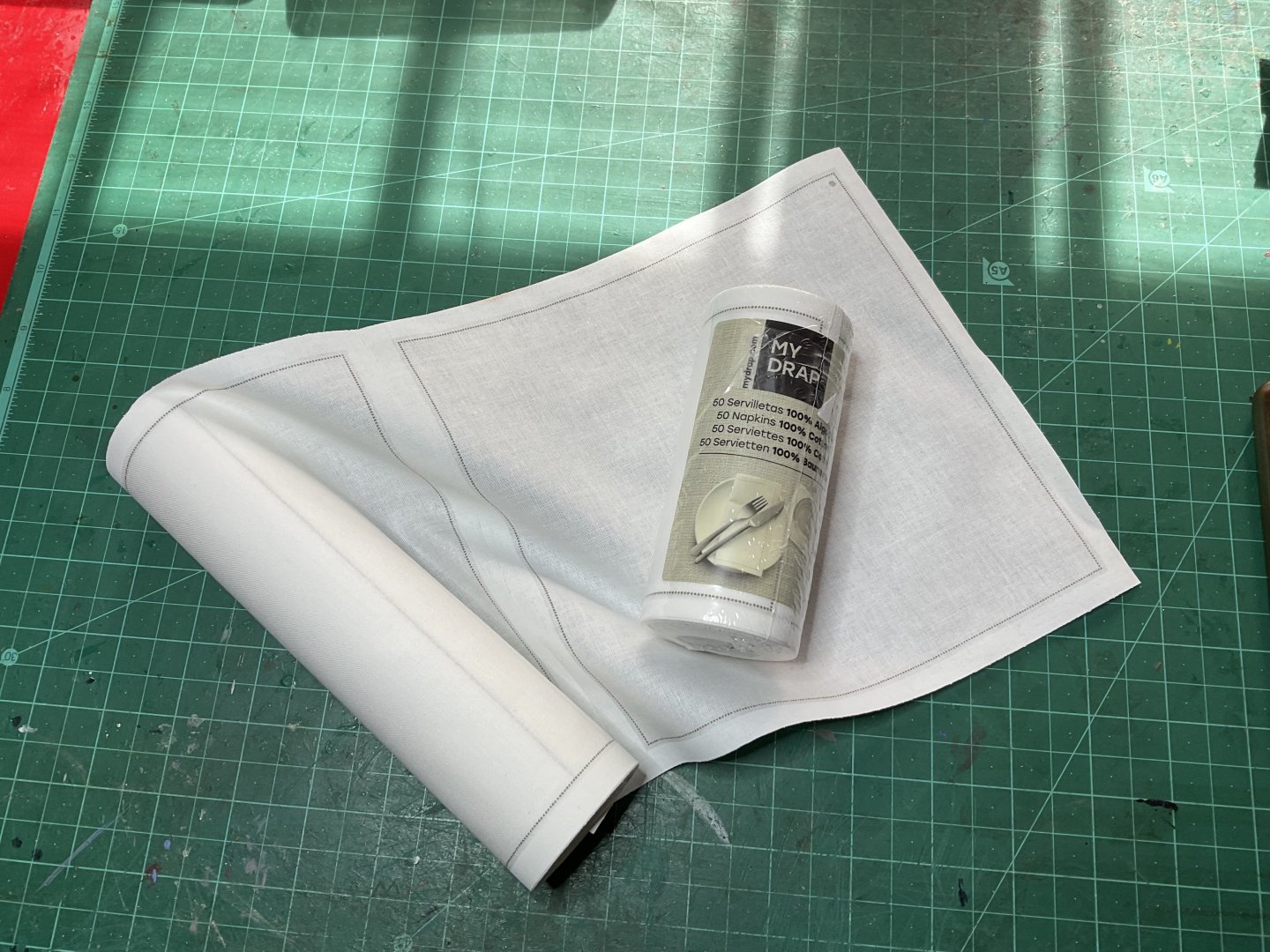-
Posts
726 -
Joined
-
Last visited
Content Type
Profiles
Forums
Gallery
Events
Album Comments posted by Javier Baron
-
-
Thank you, Wefalck. The scale is 1:92
-
Thank you, Wefalck. The scale is 1:92
-
Thank you all very much for your kind comments !
-
Wefalk, I thank you for your comment, and I would like to tell you that I started to make the model from a plan of the shapes of the Pfahlewer that appears in the book The Story of Sail de Veres LÁszló & Richard Woodman, complementing it with the information that I could find on the web.
When I was already well advanced in the model, I found the page historische-schiffsmodelle.de of the modeler Jürgen Hinrichsen, which helped me a lot when it came to rigging the model.I find the book you mention by SZYMANSKI, H. (1932): Der Ever der Niederelbe, very interesting, and, if you know it or have it, I would like you to tell me if it contains plans and graphic documentation that can be used by a modeler like me.
Kind regards.
-
Thank you all very much for your observations and comments!
-
Thank you all very much for your kind comments, which are undoubtedly an incentive to undertake new projects.
- Paul Le Wol and Alan Cabrera
-
 2
2
-
On 11/4/2024 at 11:13 PM, Paul Le Wol said:
Javier, thank you for sharing these beautiful pictures. Your work is truly wonderful!
I am very grateful for your kind comment!
-
Thank you very much for your comment!
The scale is 1:200 -
12 hours ago, Landlubber Mike said:
Another amazing model Javier! Can I ask what material you used to create the sails? They look very well done and to scale in such a small scale.
I use these disposable napkins that are made of cloth, which have a very fine weave. The edges and reinforcements of the sails are made with thin cut strips that are glued with textile glue.
-
I made my model with the information from the book "Trabaccoli e Pieleghi nella marineria tradizionale dell'Adriatico", by Mario Marzari, published by MURSIA
-
Thank you for your kind comment. I use different woods, but the most common are pear, cherry and beech. In this case I have used cherry for the hull and beech for the deck.
-
I really like that one can see so much detail in a "living" boat, including some crew members.
Congratulations. -
Thank you very much for your comment. Yes, this model is made with the same technique as all my other miniature models.
-
Thank you very much for your kind comment.
-
10 hours ago, wefalck said:
Beautiful little model indeed!
I was not aware of this type of Portuguese vessel. What is striking is this mixture of 18th (e.g. galion) and late 19th century (e.g. sail-plan) feastures, and the mixture of Dutch and Portuguese features.
Thanks, Wefalck. You are right, the Dutch influence on a Portuguese boat was attractive to me too.
-
11 hours ago, Nirvana said:
Beautiful miniature, your hand with the model made it so much better.
Looking forward to your next model.
Thank you very much for your comment and support
-
23 hours ago, Paul Le Wol said:
Javier, beautifully done!
Thank you for your kind comment
-
13 hours ago, Tony Hunt said:
Another charming and interesting miniature. I love your work, Javier, please continue!
Thank you very much for your comment and your support.
-
1:160
-
congratulations, Nils, very nice model.
-
Thank you very much, Wefalck, for your kind comment.
The scale is 1:150.
I take note of the lack of Volendam in the list of sites, and thank you very much also for the information about the Zuiderzeemuseum in Enkhuizen
-
The scale is 1:175
-
Thank you, Betaqdave.
Is not a spare rig, but a feature from larger, more archaic Latin vessels. The alternative spar (“entena”) which the model features on the deck that was already rigged with its corresponding halyard and that could be quickly hoisted once the sail was spanned, replacing the one that had been hoisted until then. In this way, the amount of rag released due to the prevailing wind could be quickly adjusted. In the model, the alternative “entena” is somewhat shorter than the bearing, so it would correspond to the bad weather sail, stronger and thicker. -
Scale 1:80





in Gallery of COMPLETED Scratch-built models
Posted
Thank you all for your comments;
Wefalck, with these two models the collection reaches 112 units.